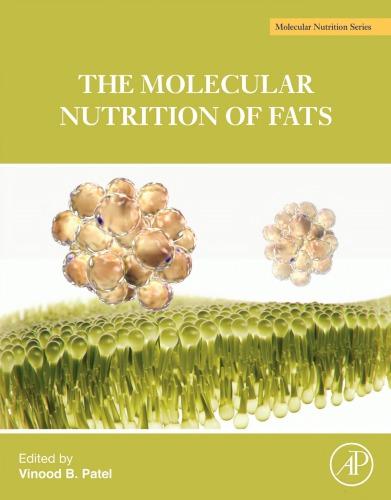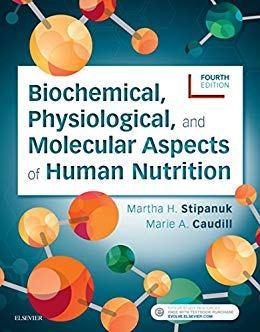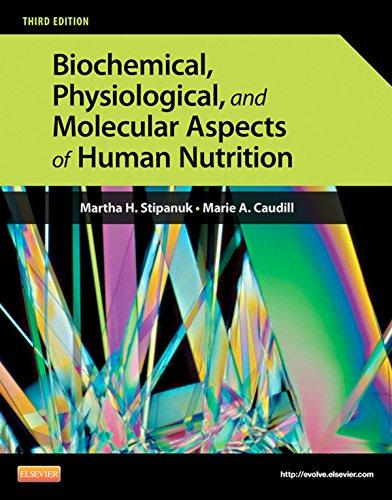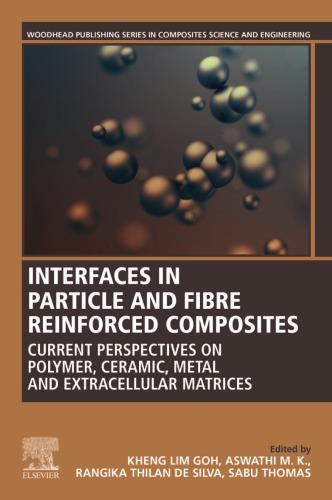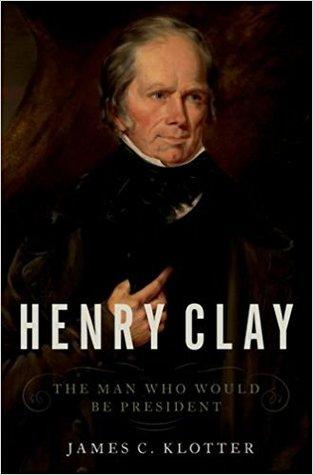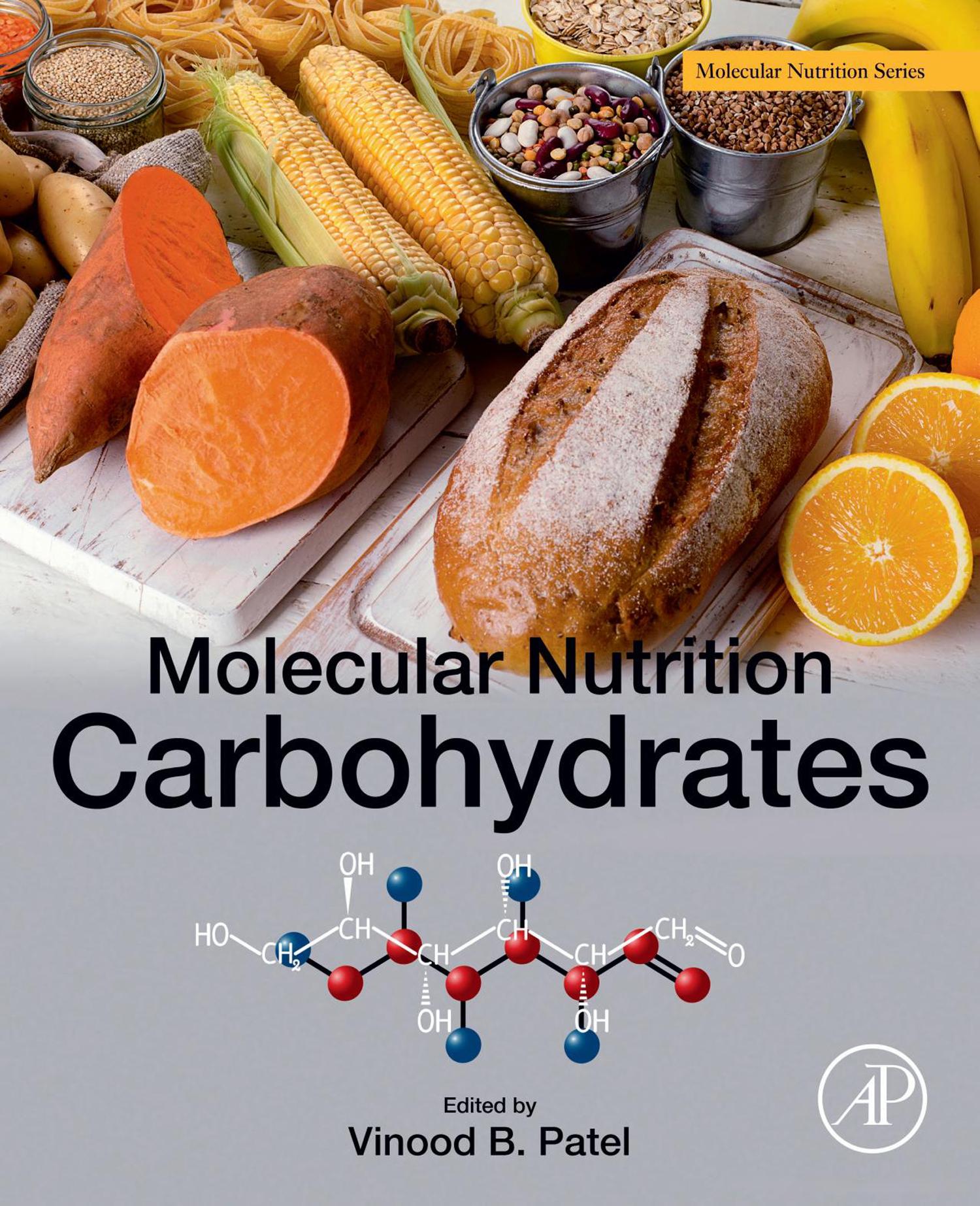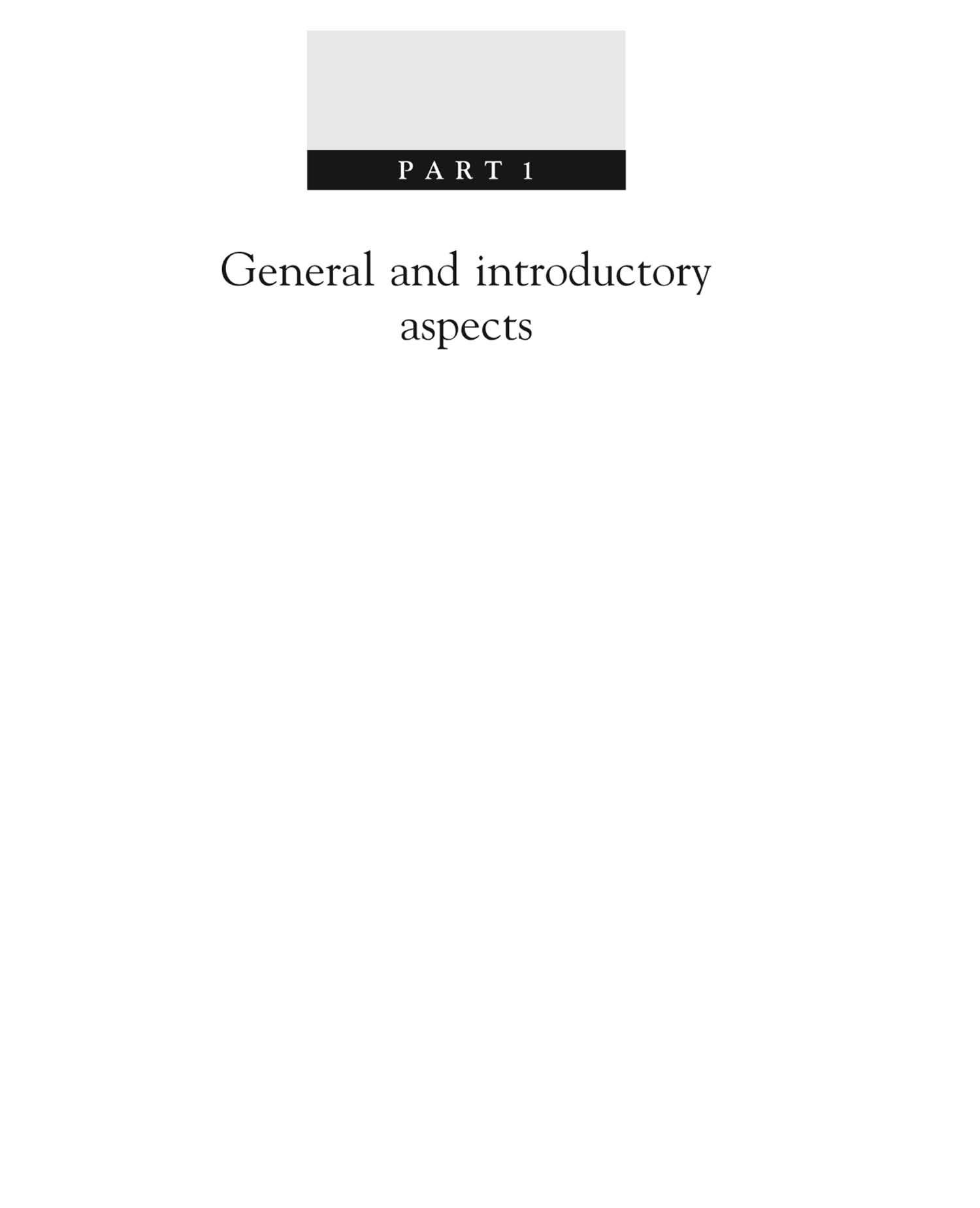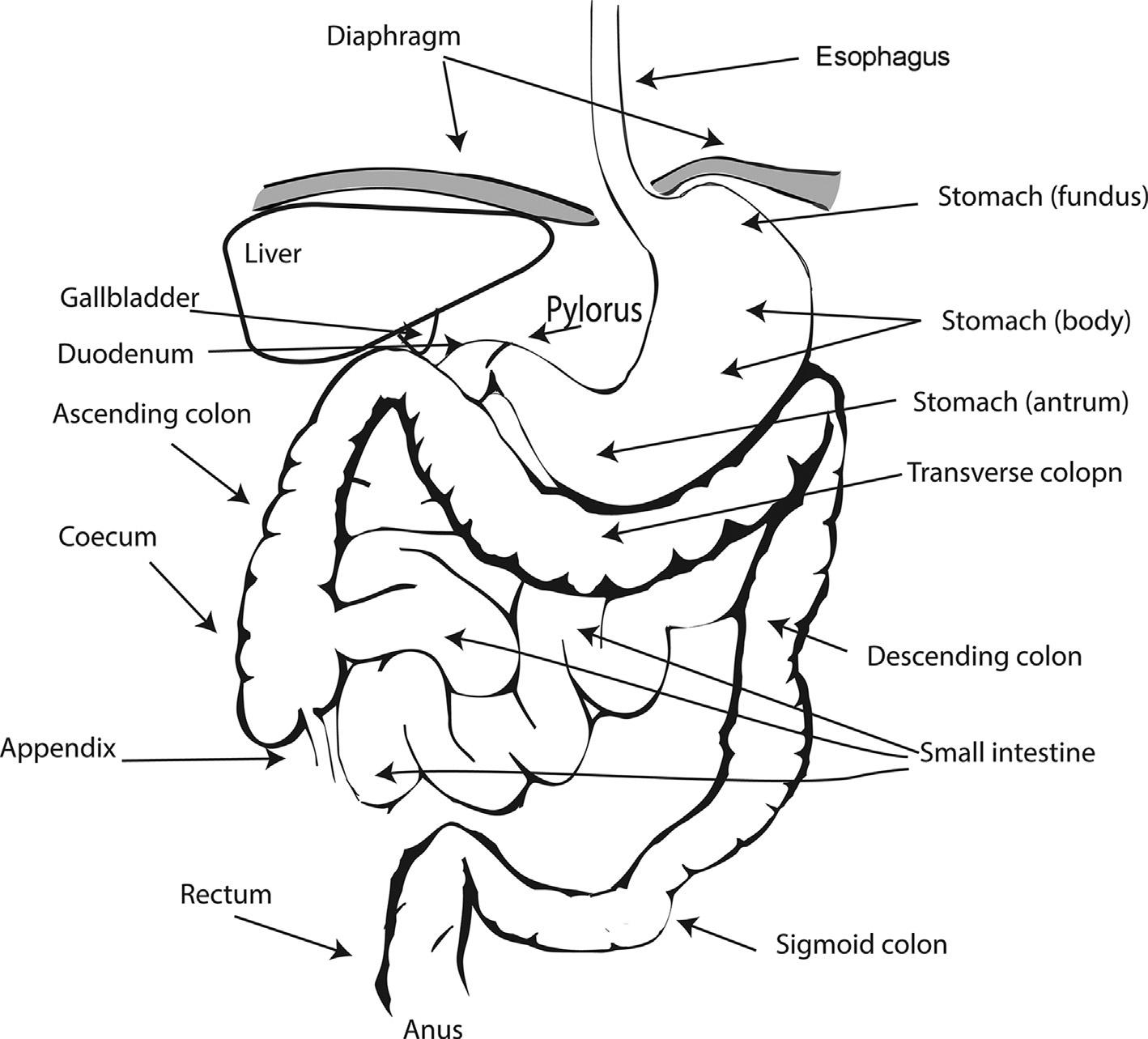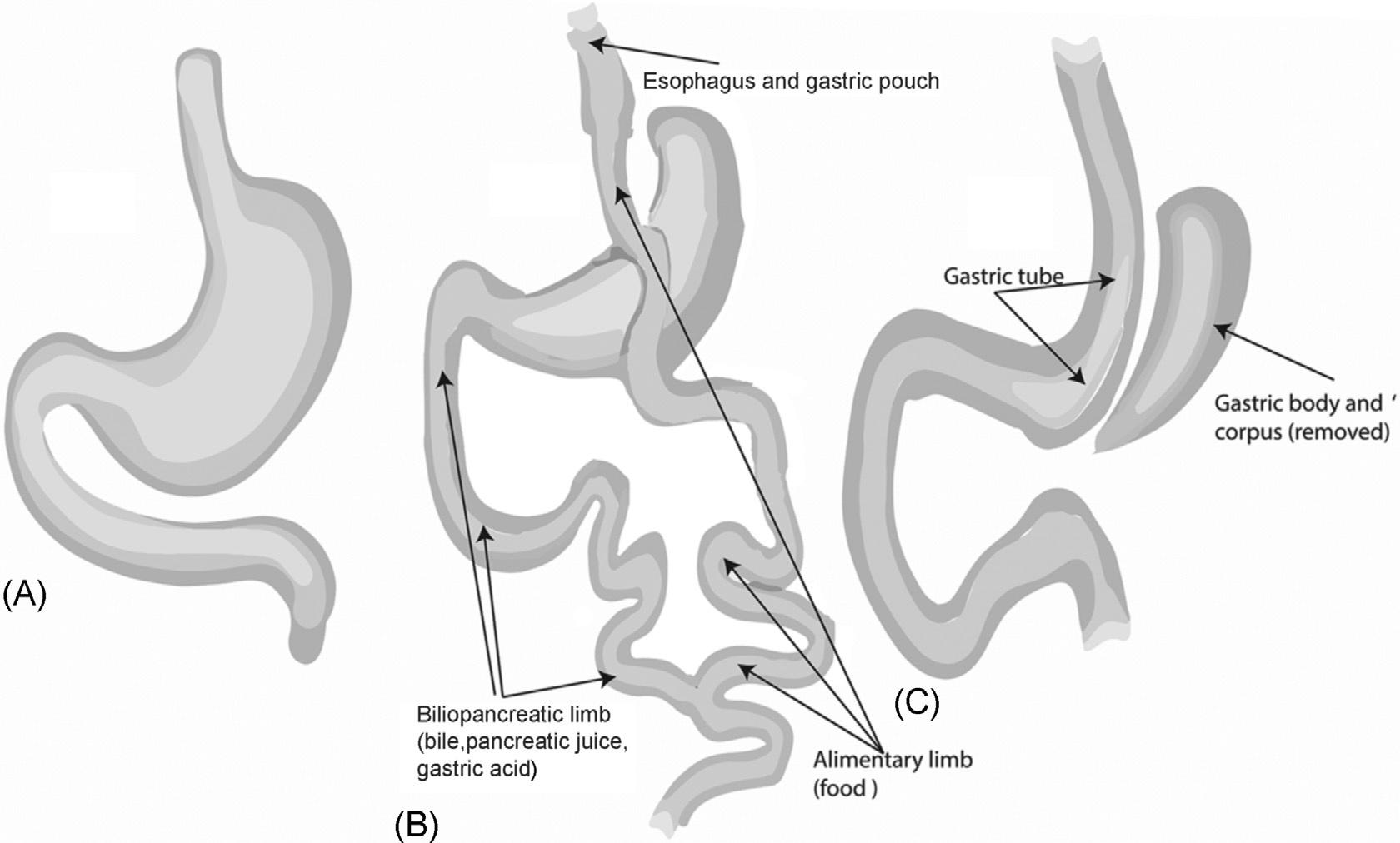https://ebookmass.com/product/molecular-nutritioncarbohydrates-vinood-b-patel/
Instant digital products (PDF, ePub, MOBI) ready for you
Download now and discover formats that fit your needs...
The Molecular Nutrition of Fats Vinood B. Patel
https://ebookmass.com/product/the-molecular-nutrition-of-fats-vinoodb-patel/
ebookmass.com
(eTextbook PDF) for Biochemical, Physiological, and Molecular Aspects of Human Nutrition 4th Edition
https://ebookmass.com/product/etextbook-pdf-for-biochemicalphysiological-and-molecular-aspects-of-human-nutrition-4th-edition/
ebookmass.com
Biochemical, Physiological, and Molecular Aspects of Human Nutrition E Book 3rd Edition, (Ebook PDF)
https://ebookmass.com/product/biochemical-physiological-and-molecularaspects-of-human-nutrition-e-book-3rd-edition-ebook-pdf/
ebookmass.com
Queen : High Hills University (French Edition) Farah Anah
https://ebookmass.com/product/queen-high-hills-university-frenchedition-farah-anah/
ebookmass.com
Awaken: The Path to Purpose, Inner Peace, and Healing
Rajendra Sisodia
https://ebookmass.com/product/awaken-the-path-to-purpose-inner-peaceand-healing-rajendra-sisodia/
ebookmass.com
Invertebrates: Fourth Edition Richard C. Brusca
https://ebookmass.com/product/invertebrates-fourth-edition-richard-cbrusca/
ebookmass.com
The Forgotten Prince (The Goldenchild Prophecy Book 3) Tanya Anne Crosby
https://ebookmass.com/product/the-forgotten-prince-the-goldenchildprophecy-book-3-tanya-anne-crosby/
ebookmass.com
Interfaces in Particle and Fibre Reinforced Composites: From Macro to Nano Scales De Silva
https://ebookmass.com/product/interfaces-in-particle-and-fibrereinforced-composites-from-macro-to-nano-scales-de-silva/
ebookmass.com
Fodor's Essential Scandinavia: The Best of Norway, Sweden, Denmark, Finland, and Iceland 3rd Edition Michelle Arrouas
https://ebookmass.com/product/fodors-essential-scandinavia-the-bestof-norway-sweden-denmark-finland-and-iceland-3rd-edition-michellearrouas/
ebookmass.com
Henry Clay: The Man Who Would Be President James C. Klotter
https://ebookmass.com/product/henry-clay-the-man-who-would-bepresident-james-c-klotter/
ebookmass.com
MOLECULARNUTRITION: CARBOHYDRATES
MolecularNutritionSeries MOLECULAR NUTRITION: CARBOHYDRATES
Editedby VINOOD B.PATEL SchoolofLifeSciences
UniversityofWestminster
AcademicPressisanimprintofElsevier
125LondonWall,LondonEC2Y5AS,UnitedKingdom
525BStreet,Suite1650,SanDiego,CA92101,UnitedStates
50HampshireStreet,5thFloor,Cambridge,MA02139,UnitedStates
TheBoulevard,LangfordLane,Kidlington,OxfordOX51GB,UnitedKingdom
# 2019ElsevierInc.Allrightsreserved.
Nopartofthispublicationmaybereproducedortransmittedinanyformorbyanymeans,electronicormechanical, includingphotocopying,recording,oranyinformationstorageandretrievalsystem,withoutpermissioninwritingfrom thepublisher.Detailsonhowtoseekpermission,furtherinformationaboutthePublisher’spermissionspoliciesandour arrangementswithorganizationssuchastheCopyrightClearanceCenterandtheCopyrightLicensingAgency,canbe foundatourwebsite: www.elsevier.com/permissions.
ThisbookandtheindividualcontributionscontainedinitareprotectedundercopyrightbythePublisher (otherthanasmaybenotedherein).
Notices
Knowledgeandbestpracticeinthisfieldareconstantlychanging.Asnewresearchandexperiencebroadenour understanding,changesinresearchmethods,professionalpractices,ormedicaltreatmentmaybecomenecessary.
Practitionersandresearchersmustalwaysrelyontheirownexperienceandknowledgeinevaluatingandusingany information,methods,compounds,orexperimentsdescribedherein.Inusingsuchinformationormethodstheyshould bemindfuloftheirownsafetyandthesafetyofothers,includingpartiesforwhomtheyhaveaprofessionalresponsibility.
Tothefullestextentofthelaw,neitherthePublishernortheauthors,contributors,oreditors,assumeanyliabilityforany injuryand/ordamagetopersonsorpropertyasamatterofproductsliability,negligenceorotherwise,orfromanyuse oroperationofanymethods,products,instructions,orideascontainedinthematerialherein.
LibraryofCongressCataloging-in-PublicationData
AcatalogrecordforthisbookisavailablefromtheLibraryofCongress
BritishLibraryCataloguing-in-PublicationData
AcataloguerecordforthisbookisavailablefromtheBritishLibrary
ISBN978-0-12-849886-6
ForinformationonallAcademicPresspublications visitourwebsiteat https://www.elsevier.com/books-and-journals
Publisher: CharlotteCockle
AcquisitionEditor: MeganBall
EditorialProjectManager: SaraPianavilla
ProductionProjectManager: VigneshTamil
CoverDesigner: MilesHitchen
TypesetbySPiGlobal,India
Contributors
R.Abdullahi DepartmentofCommunity Medicine,CollegeofHealthSciences,Nile UniversityofNigeria,Abuja,Nigeria
R.A.Ajala-Lawal Antioxidants,RedoxBiology andToxicologyResearchGroup,Department ofMedicalBiochemistry,CollegeofHealth Sciences,NileUniversityofNigeria,Abuja, Nigeria
T.O.Ajiboye Antioxidants,RedoxBiologyand ToxicologyResearchGroup,Departmentof MedicalBiochemistry,CollegeofHealth Sciences,NileUniversityofNigeria,Abuja, Nigeria
MartaAlegret DepartmentofPharmacology, ToxicologyandTherapeuticChemistry,School ofPharmacyandFoodSciences,Universityof Barcelona,Barcelona,Spain
EnochOforiAwuah DepartmentofMedical Diagnostics,CollegeofHealthSciences, KwameNkrumahUniversityofScienceand Technology,Kumasi,Ghana
HideoBaba DepartmentofGastroenterological Surgery,GraduateSchoolofMedical Sciences,KumamotoUniversity,Kumamoto, Japan
JussiaeaValenteBariuan GraduateSchoolof VeterinaryMedicine,HokkaidoUniversity, Sapporo,Japan
BurcuBayoglu DepartmentofMedicalBiology, CerrahpasaMedicalFaculty,Istanbul University-Cerrahpasa,Istanbul,Turkey
CherryBo-Htay CardiacElectrophysiology ResearchandTrainingCenter;Cardiac ElectrophysiologyUnit,Departmentof Physiology,FacultyofMedicine;Centerof ExcellenceinCardiacElectrophysiology, ChiangMaiUniversity,ChiangMai,Thailand
JulioJavierCaramelo LeloirInstituteand InstituteofBiochemicalResearchofBuenos Aires-IIBBA-CONICET,BuenosAires, Argentina
LilianaCasique LaboratoryofHuman Metabolism,DepartmentofCellBiology, Simo ´ nBolı´varUniversity,Caracas,Venezuela
SiripornC.Chattipakorn CenterofExcellence inCardiacElectrophysiology;Neurophysiology Unit,CardiacElectrophysiologyResearch andTrainingCenter,FacultyofMedicine; DepartmentofOralBiologyandDiagnostic Science,FacultyofDentistry,ChiangMai University,ChiangMai,Thailand NiponChattipakorn Cardiac ElectrophysiologyResearchandTraining Center;CardiacElectrophysiologyUnit, DepartmentofPhysiology,Facultyof Medicine;CenterofExcellenceinCardiac Electrophysiology,ChiangMaiUniversity, ChiangMai,Thailand
AdrianaChicco DepartmentofBiochemistry, SchoolofBiochemistry,UniversityofLitoral, SantaFe,Argentina;NationalResearchCouncil (CONICET),BuenosAires,Argentina
Vero ´ nicaCornejo MetabolicDisease Laboratory,InstituteofNutritionandFood Technology,UniversityofChile,Santiagode Chile,Chile
PaulaMonserratCouto LeloirInstituteand InstituteofBiochemicalResearchofBuenos Aires-IIBBA-CONICET,BuenosAires, Argentina
AgustinaCreus DepartmentofBiochemistry, SchoolofBiochemistry,UniversityofLitoral, SantaFe,Argentina;NationalResearchCouncil (CONICET),BuenosAires,Argentina
MariselDeLucca DepartmentofBiological Sciencies,FacultyofHealthSciencies,Technical UniversityofManabı´,Portoviejo,Ecuador; LaboratoryofMolecularandCellularBiology, FacultyofHealthSciences,Technical UniversityofAmbato,Ambato,Ecuador
MabroukAttiaAbdEldaim Departmentof BiochemistryandChemistryofNutrition, MenoufiaUniversity,ShebeenEl-Kom,Egypt
MarinaO.Fernandez DepartmentofMedicine, UniversityofCalifornia,SanDiego,LaJolla, CA,UnitedStates;InstituteofBiologyand ExperimentalMedicine(IByME),National ScientificandTechnicalResearchCouncil (CONICET),BuenosAires,Argentina
CarmineFinelli DepartmentofInternal Medicine,OspedaleCav.R.Apicella – ASL Napoli3Sud,Napoli,Italy
DanielGyamfi DepartmentofMedical Diagnostics,CollegeofHealthSciences, KwameNkrumahUniversityofScienceand Technology,Kumasi,Ghana
DanielleE.Haslam NutritionalEpidemiology Program,JeanMayerUSDepartmentof AgricultureHumanNutritionResearchCenter onAging,TuftsUniversity;Divisionof NutritionEpidemiologyandDataScience, GeraldJ.andDorothyR.FriedmanSchoolof NutritionScienceandPolicy,Boston,MA, UnitedStates
MitsuruHiguchi FacultyofSportSciences, WasedaUniversity;InstituteofAdvanced ActiveAgingResearch,Tokorozawa,Japan
JensJ.Holst DepartmentofBiomedical Sciences,FacultyofHealthandMedical Sciences;NovoNordiskFoundationCenterfor BasicMetabolicResearch,Universityof Copenhagen,Copenhagen,Denmark
KatsumiIizuka DepartmentofDiabetesand Endocrinology,GraduateSchoolofMedicine, GifuUniversity;GifuUniversityHospital CenterforNutritionalSupportandInfection Control,Gifu,Japan
KhadijehJamialahmadi Biotechnology ResearchCenter,PharmaceuticalTechnology Institute;DepartmentofMedical
Biotechnology,andNanotechnology,Facultyof Medicine,MashhadUniversityofMedical Sciences,Mashhad,Iran
KazuhiroKimura GraduateSchoolof VeterinaryMedicine,HokkaidoUniversity, Sapporo,Japan
JuanCarlosLaguna Departmentof Pharmacology,ToxicologyandTherapeutic Chemistry,SchoolofPharmacyandFood Sciences,UniversityofBarcelona,Barcelona, Spain
AllenA.Lee DivisionofGastroenterology, UniversityofMichigan,AnnArbor,MI,United States
YolandaB.Lombardo Departmentof Biochemistry,SchoolofBiochemistry, UniversityofLitoral,SantaFe,Argentina; NationalResearchCouncil(CONICET), BuenosAires,Argentina
JiantaoMa DivisionofNutritionEpidemiology andDataScience,GeraldJ.andDorothyR. FriedmanSchoolofNutritionScienceand Policy,Boston,MA,UnitedStates
GeraldJ.Maarman CardiovascularResearch Group,DivisionofMedicalPhysiology, DepartmentofBiomedicalSciences,University ofStellenbosch,Tygerberg,SouthAfrica
JesseJamesRonaldMasson LifeSciences, BurnetInstitute,Melbourne,VIC,Australia
ShinyaMatsuoka GraduateSchoolof VeterinaryMedicine,HokkaidoUniversity, Sapporo,Japan
NicolaM.McKeown NutritionalEpidemiology Program,JeanMayerUSDepartmentof AgricultureHumanNutritionResearchCenter onAging,TuftsUniversity;Divisionof NutritionEpidemiologyandDataScience, GeraldJ.andDorothyR.FriedmanSchoolof NutritionScienceandPolicy,Boston,MA, UnitedStates
GillesMithieux UniversitedeLyon,Lyon, France
EijiMunetsuna DepartmentofBiochemitry, FujitahealthUniversitySchoolofMedicine, Toyoake,Japan
ShoheiNakagiri GraduateSchoolofVeterinary Medicine,HokkaidoUniversity,Sapporo,Japan
ArchanaNavale DepartmentofPharmacology, ParulInstituteofPharmacy,ParulUniversity, Vadodara,India
KojiOhashi DepartmentofClinical Biochemistry,FujitaHealthUniversitySchool ofHealthSciences,Toyoake,Japan
YukoOkamatsu-Ogura GraduateSchoolof VeterinaryMedicine,HokkaidoUniversity, Sapporo,Japan
Marı´aEugeniaOliva Departmentof Biochemistry,SchoolofBiochemistry, UniversityofLitoral,SantaFe,Argentina; NationalResearchCouncil(CONICET), BuenosAires,Argentina
StephenOwusu DepartmentofMedical Diagnostics,CollegeofHealthSciences, KwameNkrumahUniversityofScienceand Technology,Kumasi,Ghana
ChungOwyang DivisionofGastroenterology, UniversityofMichigan,AnnArbor,MI, UnitedStates
ClovisStevePalmer LifeSciences,Burnet Institute;DepartmentofInfectiousDiseases, MonashUniversity;Departmentof MicrobiologyandImmunology,Universityof Melbourne,Melbourne,VIC,Australia
FabienneRajas InstitutNationaldelaSanteet delaRechercheMedicale;UniversitedeLyon, Lyon,France
Nu ´ riaRoglans DepartmentofPharmacology, ToxicologyandTherapeuticChemistry,School ofPharmacyandFoodSciences,Universityof Barcelona,Barcelona,Spain
GemmaSang € uesa DepartmentofPharmacology, ToxicologyandTherapeuticChemistry,School
ofPharmacyandFoodSciences,Universityof Barcelona,Barcelona,Spain
HiroshiSawayama Departmentof GastroenterologicalSurgery,GraduateSchool ofMedicalSciences,KumamotoUniversity, Kumamoto,Japan
ThazinShwe CardiacElectrophysiologyUnit, DepartmentofPhysiology;Centerof ExcellenceinCardiacElectrophysiology; NeurophysiologyUnit,Cardiac ElectrophysiologyResearchandTraining Center,FacultyofMedicine,ChiangMai University,ChiangMai,Thailand
KumpeiTanisawa FacultyofSportSciences, WasedaUniversity;InstituteofAdvanced ActiveAgingResearch,Tokorozawa,Japan
SimonVeedfald DepartmentofBiomedical Sciences,FacultyofHealthandMedical Sciences,UniversityofCopenhagen; DepartmentofEndocrinology,Hvidovre Hospital,Copenhagen,Denmark
NicholasJ.G.Webster DepartmentofMedicine; VASanDiegoHealthcareSystem;Moores CancerCenter,UniversityofCalifornia,San Diego,LaJolla,CA,UnitedStates
NicolaiJ.WewerAlbrechtsen Department ofBiomedicalSciences,FacultyofHealth andMedicalSciences,Universityof Copenhagen;DepartmentofClinical Biochemistry,Rigshospitalet,Copenhagen, Denmark
HiroyaYamada DepartmentofHygiene,Fujita healthUniversitySchoolofMedicine,Toyoake, Japan
MiraiYamazaki DepartmentofClinical Biochemistry,FujitaHealthUniversitySchool ofHealthSciences,Toyoake,Japan
SeriesPreface
InthisseriesonMolecularNutrition,the editorsofeachbookaimtodisseminateimportantmaterialpertainingtomolecularnutritioninitsbroadestsense.Thecoverage rangesfrommolecularaspectstowholeorgans,andtheimpactofnutritionormalnutritiononindividualsandwhole communities.Itincludesconcepts,policy, preclinicalstudies,andclinicalinvestigationsrelatingtomolecularnutrition.The subjectareasincludemolecularmechanisms, polymorphisms,SNPs,genome-wideanalysis,genotypes,geneexpression,genetic modifications,andmanyotheraspects.InformationgivenintheMolecularNutrition seriesrelatestonational,international,and globalissues.
Amajorfeatureoftheseriesthatsetsit apartfromothertextsistheinitiativeto bridgethetransintellectualdividesothatit
issuitablefornovicesandexpertsalike.It embracestraditionalandnontraditionalformatsofnutritionalsciencesindifferent ways.Eachbookintheserieshasbothoverviewsanddetailedandfocusedchapters. MolecularNutritionisdesignedfornutritionists,dieticians,educationalists,health experts,epidemiologists,andhealth-related professionalssuchaschemists.Itisalsosuitableforstudents,graduates,postgraduates, researchers,lecturers,teachers,andprofessors.Contributorsarenationalorinternationalexperts,manyofwhomarefrom world-renownedinstitutionsoruniversities. Itisintendedtobeanauthoritativetextcoveringnutritionatthemolecularlevel.
V.R.Preedy SeriesEditor
Preface
Inthisvolumeinthe MolecularNutrition Series,theauthorsfocuson Carbohydrates Carbohydratescanbeclassifiedintothree forms:monosaccharides,disaccharides,and polysaccharides,withstorageofsugarsas eitherglycogen,starch,orcellulose.Derived fromthesecomplexsugarsisthesimple sugarglucose,whichcanalsobeobtained fromsucrose;othersimple/monosaccharide sugarsincludefructose.Whilecarbohydrates areanimportantcontributiontothediet,the roleofsimplesugarsisanareaofmuchdebate inrelationtodiabetesandliverdiseases. Sugarsareknowntoactviathegut-brainaxis promotingfoodintake.Ahigh-sugardiet increasestheriskofdevelopingtype2diabetes,withsubsequentincreasedriskfor cardiovasculardisease;whereasindependentlyfattyliverdiseasearisesfromahighcarbohydratedietleadingtononalcoholic fattyliverdisease,aleadingcauseoflivercirrhosis.Furthermore,adiethighinfructose canalsoleadtofatdepositionintheliver andischemicdamageinavarietyoforgans. Sugarsalsoplayasignificantroleinthe developmentandprogressionofcancer,due totheincreaseinglycolysisandtheTCA cycle.Contributingtocancerdevelopmentis anupregulationofcarbohydrateresponse
element-bindingproteinwhichfurtherpromoteslipogenesisandtumorgrowth.This hasalsoledtoresearchinvestigatingtheinhibitionofGLUT1glucosetransportersasa mechanismtoinhibitglucoseuptakeandtumorgrowth.Despitethenegativeeffectsof glucoseincertainconditions,glucoseisessentialforCD4andCD8T-cellfunctions,regulatinganormalimmuneresponse.
Thebook MolecularNutrition:Carbohydrates containsthreesections. Part1 coversthegeneralaspectsofcarbohydratemetabolism,carbohydratesinthedietandinsulinresistance, dietarysugars,lipoproteins,glucosetransporters,fats,andglycoproteins.In Part2 thetopicscoveredarefructoseandinsulin signaling,carbohydrate-responsiveelementbindingprotein,metabolicsyndrome,glucose metabolisminTcells,effectsof D-galactose, sugarsandsweettastereceptors,peroxisome proliferator-activatedreceptors,andthebeneficialeffectsofglucosamine. Part3 includes geneticmachineryanditsfunction,andprovidescoverageofnutrigenomics,glucose andDNAmethylation,GALTgene,OLR1 andIL17Agenes,andglucosemetabolism.
TheEditor
SimonVeedfalda,b,NicolaiJ.WewerAlbrechtsen a,c , JensJ.Holsta,d
aDepartmentofBiomedicalSciences,FacultyofHealthandMedicalSciences,Universityof Copenhagen,Copenhagen,Denmark bDepartmentofEndocrinology,HvidovreHospital, Copenhagen,Denmark cDepartmentofClinicalBiochemistry,Rigshospitalet,Copenhagen, Denmark dNovoNordiskFoundationCenterforBasicMetabolicResearch,Universityof Copenhagen,Copenhagen,Denmark
SUMMARYPOINTS
•Dietarycarbohydrate(Fig.2)islargely ingestedaspolysaccharidesintheformof starch(amylopectinandamylose)with smallercontributionsofdisaccharides (sucrose,maltose,andlactose).All carbohydratesmustbebrokendowninto monosaccharidetoallowabsorption. Glucoseisthemajormonosaccharide producedbythedigestionofdietary carbohydrate.
•Therateofcarbohydratedeliveryintothe smallintestine(i.e.,gastricemptyingrate)is akeydeterminantofbloodglucoselevels afterameal(postprandialglycemia).It influencestheabsorptionrateofglucoseand thesecretionofgutpeptidesqualitatively andquantitatively.
•Thereleaseofguthormonesdependson nutrientsensing.Amajorfactorinnutrient
sensingistheabsorptionofnutrients.
•Guthormonesregulateappetite,control foodintake,adjustgastrointestinalmotility (includinggastricemptying),regulatethe secretionofdigestivejuices,andstimulate insulinsecretion.
•Thegutpeptides,glucagon-likepeptide1 (GLP-1)andglucose-dependent insulinotropicpolypeptide(GIP),are responsiblefortheso-calledincretineffect— theaugmentationofglucose-stimulated insulinsecretionafteroralingestionof nutrients.
•Manipulationofgastrointestinalfunctionby pharmacological,nutritional,andin particularsurgicalinterventionshasthe capacitytochangepostprandialglucose handlingandoverallglucosehomeostasis.
Keyfacts
•Gastricemptyingrate(GER)istherateatwhichnutrientsaredispensedintothesmallintestinefrom thestomach.Thenormalrangespans1–4kcal/min.
•InsulinisreleasedtogetherwithC-peptideinequal(molar)amounts.Bothpeptidesareproduced fromthesameprecursorpeptide.Whileinsulinisextractedbytheliver(30%–50%),thisisnotthecase forC-peptide.ThereforeC-peptidehasbeenusedasasurrogatemeasuretobetterestimatethetotal amountofsecretedinsulin.
Introduction
Homeostasisisatermusedtodescribethemaintenanceofastableinnerenvironmentby complexinteractionsbetweenmultipleorgans(Bernard,1974)ultimatelyservingtomaintain thefunctionsofthebrain.Glucoseisthepreferredfuelofthebrain,andasteadysupplyis critical.Glucoseisamonosaccharide,afundamentalcarbohydrateunit,andthekeyenergy currencyinthebody.Glucosehomeostasisisatermusedtodenotethemaintenanceofstable
glucoseconcentrationsinthebloodstreamwithinanarrowconcentrationrange(euglycemia) whileavoidinghighglucoselevels(hyperglycemia)andlowglucoselevels(hypoglycemia). Duringfasting,glucoseisreleasedfromthelivertoensureasteadysupplyofglucoseeither byglycogenolysis(thereleaseofglucosestoredasglycogenintheliver)orbygluconeogenesis(thegenerationofglucosefromotherenergysubstrates).
Thefastedstatesetsinafterthecompletedigestionandabsorptionandstorageofnutrients fromprecedingmeals.Dependingontheamountoffoodeatenduringagivenmealandthe macronutrientcompositionofthemeal,thefastedstatemaybereachedafterafewhours (dilutenutrientsolutions)uptoseveralhours(large,solidfattymeals).Inthemodernworld, wherethefoodsupplyisplentiful,itisnotunusualforhumanstoenterthefastedstateonly duringsleepbecausesnacksbetweenregularmealsprovideamoreorlesscontinuoussupply ofnutrientstothegastrointestinaltract.
Foodintakebreaksthefast.Todampenchangesinglucoseconcentrationswhenfoodis ingested,arangeofbehavioralandgastrointestinalcheckshaveevolved.Somearerecruited concurrently,whileothersareengagedconsecutively.Entryofnutrientsintothecirculationis steeredbyasystemofreflexesandregulatoryhormones;thisincludesvariouscharacteristic patternsofmotilityinthegastrointestinaltract,aswellasthereleaseofdigestivejuices, absorptionofnutrients,andchangesintheintestinalbloodflow.
Determinantsoftheamplitudeanddurationofglucoseexcursionsafteramealincludethe glucoseconcentrationbeforethemeal,thephysicalcharacteristicsoftheingestedfoods,the nutrientcompositionofthemeal,therateofsmallintestinalnutrientdelivery,intestinal glucosetransport,insulinandglucagonsecretion,hepaticglucosehandling,andtheinsulin sensitivityofperipheraltissues.
Thephasesofameal
Amealmaybeperceivedasatwo-stepprocessmadeupofapreabsorptiveandanabsorptivephase(Katschinski,2000).Inmoredetail,amealcanbedividedintophasesdefinedby theprogressofnutrientsfromonesensorydomainoranatomicalcompartmentofthealimentarytract(Fig.1, Table1)tothenext—thecephalicphase,thegastricphase,andtheintestinal phase.
TABLE1 Functionsoftheindividualsegmentsofthealimentarytract.
Segmentof alimentarytractFunction
OralcavityMechanicalandenzymaticbreakdownoffoods,tasting,tasting,cephalicresponses
EsophagusConductive(bringsmasticatedfoodsfromtheoralcavitytothestomach)
StomachStorageoffoods,mechanicalandenzymaticbreakdownoffoods.Gastricacidproduction, hormoneresponses
SmallintestineEnzymaticbreakdownofnutrients,absorption(waterelectrolytes,andnutrients)hormone responses
LargeintestineAbsorptionofwater,electrolytesandsomenutrients,hormoneresponses,storageoffeces. Housescolonicbacteria
Thepreabsorptivemealphaseencompassesthecephalicandgastricphases( Gida ck etal.,1987).Thecephalicphaseistriggeredbymealexpectations(accompaniedbyhunger sensations),laterbythesightandsmelloffood,followedbythetasteandchewingsensationswhenfoodenterstheoralcavity.Neural signalstriggeredbythesesensationsare transmittedtoandrelayedinthecentralnervoussystem.Thecentralintegrationofsensory impulsesgeneratesnervesignalsthataretransmittedviathevagalnerves,amajorpathway ofbrain-gutcommunication,topreparegastrointestinaltargetorgans( Berthoud,2008)for theincomingnutrients.Cephalicphaseresponseshavebeeninvestigatedbyso-calledsham feedingstudieswhereparticipantsexper ienceabroadsensoryexposuretofoods beforeprematureterminationofingestionbyspittingoutfoods(Kontureketal.,1981 ; Veedfaldetal.,2016).
Swallowingmovesfoodintotheesophagus.Thegastricphasesetsinwhenfoodentersthe stomach.Stretchingofthegastricwallactivatesvagalsensorynervesgivingrisevago-vagal reflexactivity(Sch € o € onetal.,1980).Whenfoodshavebeenprocessedinthestomach,ground
FIG.1 Overviewofthegastrointestinaltract.
intosmallerparticles,andmixedthoroughlywithgastricacid,theresultingfluid,chyme,is squirtedintotheduodenum.
Thisinitiatestheintestinalphase.Rapidly,freeenzymescarriedinpancreaticjuicesand membrane-boundenzymesonintestinalepithelialcellsbreakdownnutrientsintoabsorbable molecules.Shortlythereafter,nutrientsbegintoappearinbloodleavingthesmallintestine demonstratingthattheabsorptivephasehasbegun.
Shouldmealingestionbeprolonged,asisoftenthecase,thejustdescribedprocesseswill overlap,asincomingfoodselicitcephalicactivationwhilepreviouslyingestedfoodsare stretchingthestomachwallorbeingabsorbedbyintestinalcells.Neurohormonalresponses triggeredbynutrientsinonegastrointestinalcompartmentmayinsuchcasesmodulatehandlingofnutrientsinsegmentsbothup-anddownstream.
Dietarycarbohydrate
Inmostdiets,carbohydrateisprincipallyingestedintheformofpolysaccharides—starch andfiber.Mostingestedcarbohydratecomesfromgrainsandothertypesofplantmaterials withonlyasmallportionstemmingfromanimals(glycogen).Theintakeofdisaccharides, suchaslactose,sucrose,andmaltose,isquitevariable.Freemonosaccharidesmakeuponly aminutefractionofanormalwesterndiet.
Dietarycarbohydrates.Schematicpresentationofthemostcommondietarycarbohydrates.
FIG.2
Theendgoalofcarbohydratedigestionistheconversionofpolysaccharidesanddisaccharides(Fig.2)intomonosaccharides—theonlyabsorbablemolecularformsofcarbohydrates.
Glucoseisthemajormonosaccharidecomponentinourdiet.Starchandfibersaremadeup ofglucose.Thedisaccharidesareeithermadeupoffwoglucosemolecules(i.e.maltose, glucose-glucose)whileglucosemakesuponlyhalfofthedisaccharideslactose(glucosegalactose)andsucrose(glucose-fructose).Theaveragecarbohydratecomponentofawestern dietforanadultover24hamountstoabout200-gglucose,50-gfructose,and10-ggalactose (Southgate,1995).
Theoralcavity:Mechanicalbreakdownandenzymaticdigestion
Intheoralcavity,foodsaremasticatedintosmallerbitessuitableforswallowing.During themasticatoryprocess,aprofusereleaseofsaliva,triggeredviacephalicactivation (RichardsonandFeldman,1986)helpstocoatfoodssothattheymaytravelsmoothlythrough theesophagus.Dependingonthesizeoftheingestedfoodmorselsandthedegreeofmastication,thesurfacesavailableforenzymaticactivitymayvarygreatly.Dissolvedinsalivaare variousenzymesincludingalphaamylase(ptyalin),whichcontributetothedigestionofpolysaccharides.Amylasecleavesstarchintosmallerfragments(Southgate,1995)suchasmaltose, maltotriose,anddextrins(Fig.2).
Thestomach:Storage,digestion,andemptying Storage
Afterinitialmechanicalandenzymaticprocessingintheoralcavity,swallowedfoodsare passedwithinafewsecondsviatheesophagus,aconduitwithoutdigestiveorabsorptive functions,tothestomach.Priortothearrivaloffoodsinthestomach,gastricwalltension isreducedduetovagalsignals.Thismakesitpossibleforfoodtoenterthestomachwithout risesintheluminalpressure(receptiverelaxation).Asmorefoodsareingested,andasthe amountofgastricacidproducedincreases,thevolumeofaccumulatedgastriccontents increases.However,duetoavago-vagalreflex,thetensionofthegastricwallisfurther reducedpreventingtheluminalpressurefromrising(accommodationreflex).Thesemechanismsallowunimpededandcontinuedmealingestionaslongasfoodshavenotyetbeen sufficientlydegradedtobeallowedintothesmallintestine.
Digestion
Inthestomach,theenzymaticdigestionofcarbohydratesslowsdown,butmechanical processingofsolidfoodscontinues.Foodparticleswithdiametersexceeding2mmarenot allowedtopassbeyondthepylorus(gr.meaning“thegatekeeper”)amusculartract restrictingtheentryofgastriccontentsintotheintestine(Fig.1).Thedelaybetweentheingestionofsolidfoodsandtheinitiationofemptying,whichspansaround20–40min,is termedthelagphase.Duringthisperiodoftime,foodsaregroundinto1–2-mmparticles.
Thisisaccomplishedbythecoordinatedcontractionsofthethickmuscularlayeroftheantral stomachwall,repeatedlypropellingfoodstowardstheclosedpylorus.
Gastricemptying
Groundfoodmaterialsmixedwithgastricjuicesandingestedfluidsistermedchyme.This nutrient-enrichedfluidispassedontothesmallintestineinsquirts(Hauskenetal.,1992).
Liquids,evenwhentheyareingestedtogetherwithsolids,areemptiedwithoutmuch delay—inanexponentialpatternifthesolutionisnutrientdiluteand,moreslowly,ina linearpattern,ifthesolutionisnutrientconcentrated( Horowitzetal.,1993).Therateat whichnutrientsexitthestomachdependsnotonlyonfoodparticlesizeandconsistency/viscositybutalsoonthenutrientcompositionoftheingestedfoods(Horowitz etal.,1994)andtheosmolarityofthechyme(Hunt,1960 ),whichincreasesdramaticallyonce thenutrientmoleculesreachthefreeandmembrane-boundenzymesofthesmallintestine (Ladasetal.,1983).
Whenglucosesolutionsofthesamevolumebutcontainingincreasingamountsofglucose areingested,gastricemptyingwillbecompletedearlierfordiluteglucosesolutionthanfor higherconcentrationsolutions(Baggeretal.,2011).Inhealthyindividualstherateofgastric emptying(expressedaskcal/min)variesbetweenindividualswithintherangeof1–4kcal/ min(Breneretal.,1983).Thedeliveryof25-g( 100kcal)glucosesolutiontothesmallintestinethereforetakesbetween25(4kcal/min)and100min(1kcal/min),whilea100-g ( 400kcal)glucosesolutionwillbeemptiedwithin100min(4kcal/min)and400min (1kcal/min).Thatgastricemptyingisakeydeterminantofpostprandialglucoseexcursions influencingboththedurationofintestinalglucoseandpeakglucoselevelsafteroralglucose exposure(Horowitzetal.,1993),hasbeenelegantlydemonstratedbygradedinstillationof glucoseviaduodenalcatheters(Maetal.,2011).
Therateofgastricemptyingisdeterminedbyafinelytunedinterplaybetweenthesmall intestine,theautonomicnervoussystem,andthestomach(Table2).Nutrientspresentinthe smallintestinestimulatethesecretionofawholerangeofguthormones,manyofwhichinfluencetherateofgastricemptying—includingbutnotlimitedtoGLP-1(Schirraetal.,2000), CCK(Rehfeld,2004),PeptideYY(Witteetal.,2009)and,perhaps,neurotensinandpancreatic polypeptide(Schmidtetal.,2005; Thoretal.,1983).Toallowfurtherfine-tuningofgastric emptying,hormonessuchasghrelinandmotilinmayaccelerategastricemptying(Ohno etal.,2010).Thetimeofdayhasalsobeensuggestedasadeterminantofgastricemptying becausethemotoractivityofthesmallintestinefluctuatesduringfasting(Thompson etal.,1982).
Itfollowsthattherateofgastricemptyingis notconstantoverthecourseofamixedmeal becausethenutrientcompositionoffoods remaininginthestomachwillnotbethesame throughoutameal,theconsistencyoffoodsw illchange,andnutrientsalreadypassedinto thesmallintestinewillhavestimulatedthereleaseofvariousgutpeptides.The concentrationofabsorbednutrientsinthecirculationmayalsomodulategastric emptying.Thushyperglycem iaslowsgastricemptying( Schvarczetal.,1997 ),whereas lowbloodglucose(hypoglycemia, 2.5mmol/L)markedlyacceleratesgastricemptying (Schvarczetal.,1995),bothinvolvinghypothalamicandvagalmechanisms(Hjelland etal.,2005 ).
TABLE2 Guthormones.
Peptides DistributioninGItract
Gastrointestinaltract
Ghrelin
Motilin
Fundusandbodyofthestomach
Stomachandsmallintestine
Function
Stimulatesgastricemptying,stimulates foodintake.Inhibitsinsulinsecretion
Regulatesintestinalmotility,migrating motorcomplexactivity
Gastrin Stomach Stimulatesgastricacidsecretion
Cholecystokinin (CCK)
Glucose-dependent insulinotropic polypeptide(GIP)
Glucagon-like peptide1(GLP-1)
GLP-2
Uppersmallintestine
Smallintestine
Smallandlargeintestine
Smallandlargeintestine
Neurotensin Smallintestine
PeptideYY(PYY)Smallandlargeintestine
Pancreas
Insulin
Glucagon
Pancreaticislets(betacells)
Releasedtogetherwithequalamountsof C-peptide(1:1).Secretionisstimulatedby glucose,aminoacids,guthormones(Baggio andDrucker,2007; Rehfeld,2011)
Pancreaticislets(alphacells)
Releasedinresponsetohypoglycemia, elevatedaminoacids.Secretionis suppressedbyhyperglycemia(Baggeretal., 2014)andGLP-1(Lundetal.,2011)
Thesmallintestine:Digestionandabsorption
Stimulatesgallbladderemptying,inhibits gastricemptyingandgastricacidsecretion, stimulatespancreaticenzymesrelease. Lowersappetite
Stimulatesinsulinsecretion,stimulates glucagonsecretionduringhypoglycemia
Slowsgastricemptying,inhibitsgastricand pancreaticsecretions.Lowersappetiteand reducesfoodintake.Stimulatesinsulin secretion,inhibitsglucagonsecretion
Stimulatesgrowthofintestine,intestinal bloodflow
Slowsgastricemptying,inhibitsacid secretion
Lowersappetite,reducesfoodintake,slows gastricemptying
Lowersbloodglucosebyincreasingglucose uptakeinliver,muscle,andfatcells.Inhibits gluconeogenesisandglycogenolysis. Stimulatesproteinsynthesis
Stimulatesgluconeogenesisand glycogenolysisduringfasting
Thesmallintestineisnotasimplehollowtu be.Themucosalsurfaceareaisaugmented bycircularandsemicircularinfoldingsofthegutwall(plicaecirculares).Thesefolds
aremostdevelopedintheproximalpartsofth eintestinewheretheexposuretonutrients isgreatest.Thesmallintestinalsurfaceisfurtheraugmentedbythepresenceoffingerlikemucosalinfoldings(villi).Villiaretallerandmorecloselysetintheproximalsmall intestinethaninthedistalsmallintestine.T heseanatomicalstructuresallowmanymore intestinalcells(enterocytes)toinhabitagi venlengthofsmallintestinethanwouldhave otherwisebeenpossible.Enterocytesarethesmallestdigestiveandabsorptiveunitsinthe smallintestine.
Digestion
Uponenteringthesmallintestinefromthestomach,carbohydratemoietiesnotalready brokendownintomonosaccharideswillundergoenzymaticdegradationby(1)pancreatic enzymesand(2)enzymespresentintheluminalmembranes(“brushborder”)ofthe enterocytes.Thetermbrushborderstemsfromthemicroscopicalappearanceoftheluminal membranesofenterocytes(Fig.2).Thebrushlikeappearanceisduetothepresenceoflong thinmembraneprojections,whichservetomarkedlyincreasetheluminalsurfaceareaof theenterocyte.Thelargermembraneareaallowsmoreenzymesandnutrienttransporters tobepresentedonthesurfaceofthecell.
Pancreaticenzymesarecarriedinthepancreaticjuice,anenzyme-enrichedsodiumbicarbonatesolution,thatisreleasedinresponsetoneuralactivation(Katschinskietal.,1992)and hormonesreleaseduponnutrientandchemicalstimulationofduodenalguthormoneproducingcells(Isenbergetal.,1977).
Likethesalivaryamylaseenzyme,pancreaticamylasebreaksdownalpha1,4bonds betweenglucosemoleculesinbranchedandunbranchedglucosechainsofstarchmolecules generatingmaltose(twoglucosemolecules),maltotriose(threeglucosemolecules),and oligosaccharidessuchasdextrins(glucosemoleculesconnectedbyalpha1,4andalpha1,6 bonds)(Fig.2).
Themembrane-boundenzymealphaglucosidasehydrolyzesoligosaccharides,maltose, andmaltotrioseintoglucose.Otherexamplesofmembrane-boundenzymesareisomaltase (α-1,6glucosidase),maltase,sucrase,andlactase,which,respectively,cleavedextrins, maltose,sucrose,andlactoseintomonosaccharides(Fig.2).Worldwide,manyadultsare intoleranttolactoseduetoagraduallossoflactaseactivityafterweaning(Southgate,1995).
Fortheenzymesinthebrushborderoftheintestinalcells(enterocytes)inthemucosato functionoptimally,itisessentialthatthemucosaiscontinuouslybathedwithnewchyme. Thisisaccomplishedbythesegmentalmovements(annularnonpropulsivecontractions) ofthesmallintestinalwall.Afterthecompletionofthefinaldigestionsteps,monosaccharides engagetransportersintheluminalmembranesoftheenterocytes.
Absorption
Thegastrointestinalsegmentsupstreamfromthesmallintestinedonotcontributetothe absorptionofmonosaccharides.Therefore,therateatwhichcarbohydratesareallowedto enterthesmallintestineisamajordeterminantofglucoseabsorptionandthebloodglucose afterameal(postprandialglycemia).Dampeningsmallintestinalmotilitywillalsodelaythe uptakeofglucoseandreducethepeakglucoselevels(Chaikominetal.,2006).
Enterocytesareequippedwithtransportproteinsthathelptoimportmonosaccharides fromtheintestinallumen.Sodium-glucose-linkedtransporter1(SGLT-1)transports1glucose or1galactosemoleculetogetherwithtwosodium(Na+)ions.Thistransportprocessis secondaryactivebecausethesodiumgradient(lowintracellularsodiumconcentrationvs highextracellularsodiumconcentration)isestablishedbythesodiumpotassiumATPase oftheenterocyte.Couplingglucoseandgalactosetransporttosodiumthereforeallows theabsorptionofthesetwomonosaccharidesevenwhentheluminalconcentrationof glucose/galactoseislow.Fromwithintheenterocytesglucoseandgalactoseareexported viatheGLUT2transporter—relyingonaconcentrationgradienttodrivetransport(facilitated transport).ThusGLUT2transporterswilltakeglucoseandgalactosefromwheretheconcentrationishightowhereitislower.Therefore,shouldglucoseconcentrationinthebloodstream behigherthaninsidethecell,theGLUT2transporterwillimportglucoseratherthanexportit.
Fructoseistakenupfromtheintestinallumenbyspecifictransporters(GLUT5)presentinthe enterocytemembranes(DouardandFerraris,2008)andexportedfromenterocytesviaGLUT2 transporters.Transportthroughbothtransportersisdrivenbyaconcentrationgradient.
Malabsorption
Incompletelydigestedcarbohydratescannotbeabsorbed.Thisisthecaseforfiberanda variablefractionofnonfibercarbohydrates.Thesecarbohydrates,inparticularfiber,help toretainwaterintheintestinallumenandaddbulktothestools.Fiberandincompletely digestednonfiberpolysaccharidesalsoserveasfodderforthebacteriacolonizingthecolon (Flint,2012).Itisestimatedthatbetween10%and20%ofingestedcarbohydratepasses throughthesmallintestineintothecolon.Iflargeramountsofmalabsorbedcarbohydrate reachthecolon,thiswillgiverisetoexcessiveproductionofgassesandirritantsresultinginflatulenceand/ordiarrhea.Disaccharidesandmonosaccharidesarealmostcompletelyabsorbedintheuppersmallintestine.Thecapacityforfructoseabsorptionis highlyvariable,andformostindividuals,anintakeofmorethan 35g/daywillresultin malabsorbtion.
Postabsorptivedispositionofglucose
Afterabsorption,monosaccharidesarebroughtfromthesmallintestinetotheliverviathe portalvein.Intheliver,galactoseandfructoseareconvertedintoglucose.
Afractionoftheglucosearrivingtotheliverafteramealmaybetransportedacrossthe hepatocytemembranesviaGLUT2andphosphorylatedbyglucokinaseallowingittoenter thepathwaytoglycogensynthesisfacilitatedbyglycogensynthase(anenzymethatglues glucosetogetherintolargestoragemolecules—glycogen)activatedbyinsulin,whichalso inhibitstheenzymethatbreaksdownglycogen.Glucosestimulatesthesecretionofinsulin (seeinthesucceedingtext)andinhibitsthesecretionofthecounteractinghormoneglucagon (whichstimulatesthebreakdownofglycogenandinhibitstheintegrationofglucoseinto glycogen).Whentheinfluxofglucosefromtheintestineceases,theliverwillstartreleasing glucoseintothebloodleavingtheliverbyhydrolyzingglycogen(glycogenolysis)andby generatingglucosefromothersubstrates(gluconeogenesis).
Signalsfromthegut
Therolesofguthormones
Whennutrientsreachthemucosalsurfacesofthestomachandintestine,theywillnotonlybe absorbedbyenterocytesbutalsobesensedbyadiversepopulationofchemosensoryhormoneproducing(endocrine)cellsthatareinterspersedbetweenglandularcells(stomach)and digestive/absorptivecells(smallintestine).Whentheseendocrinecellsareactivated byoneorseveralfactorse.g.(hyperosmolarity)(Veedfaldetal.,2018),nutrientcomposition (Herrmannetal.,1995; Lindgrenetal.,2011),pH,andmechanicalstimulation(e.g.distortion orstretching)(distortion/stretch)(Schoonetal.,1980),theydischargehormones(Dirksen etal.,2013; Hornnesetal.,1980)(Table2).
Byengagingabroadpanelofguthormones,itispossibletoencodewithmoreprecisionthe responsestoincomingnutrientsonthegut—forexample,accordingtotheirtype,load,and spatialprogress.
Thesehormonesmayactlocallyorondistanttargetorgans.Localeffectsmaybeelicitedby actingonentericnervesunderthemucosaoronneighboringabsorptivecells,hormoneproducingcells,orsmoothmusclecells.Effectsondistanttargetorgansmaybecommunicated byhormonesreleasedintothecirculationorbyactivationof,forexample,vagalsensorynerve fibers(Dockray,2014; HolstandDeacon,2005).
Thesepeptideshelptoorchestratenotonlygastrointestinalfunctionsbutalsoensures coordinationwithotherorgansystems(e.g.,regardingbloodsupplyduringameal).As previouslymentionedakeyroleofguthormonesistoregulatetherateofnutriententryinto thesmallintestine(Rehfeld,2004; Schirraetal.,2000; Schmidtetal.,2005; Thoretal.,1983; Witteetal.,2009)anddigestiveprocesses,buttheyarealsoinvolvedinintestinalhousekeeping(Ohnoetal.,2010),cytoprotectionandmaintenance(Druckeretal.,1996),andimportantlyintheregulationofappetiteandfoodintake(Degenetal.,2005; Steinertetal.,2014; Zanderetal.,2002).
Inhibitionofappetiteandreductionoffoodintakeelicitedbyguthormonesisanimportant elementinnutrientbalanceandbodyweightregulation.Bodyweightandadiposityinturn regulateinsulinsensitivityandtherebyfastingandpostprandialglucoseconcentrations.
Asubsetofgutpeptideshaveturnedouttobekeyfactorsintheregulationofinsulinand glucagonrelease(BaggioandDrucker,2007).Thisisimportantbecausethebalancebetweeninsulinandglucagonsignalingdetermineswhether nutrientssuchasglucoseandaminoacidsare clearedfromthecirculationintotheliver,muscles,andadiposetissueforstorage(thefedstate, insulindominance)orliberatedfromexistingstores(thefastedstate,glucagondominance).
Theincretineffectandtheincretinhormones
Theincretineffect
Theincretineffectisatermusedtodenotetheimportanceofintestinalfactorsforglucose handling.Oralglucose(PerleyandKipnis,1967)orglucoseadministeredintothesmallintestine(Maratheetal.,2014)provokesmoreinsulinsecretionthandoesintravenousglucose infusedtoobtainthesamebloodglucoseconcentrationcurve(isoglycemia)asthatobserved ontheoralorintestinalglucosestimulationdays,respectively.
1.Generalandintroductoryaspects
Theaugmentedinsulinresponsetointestinalglucoseabsorptionoccursbecausethesecretionofinsulinisstimulatednotonlybyglucosecirculatinginbloodbutalsobyguthormones releasedfromendocrinecellsnestedintheintestinalliningbetweenthedigestingandabsorbingenterocytes.
Thesehormonesinformtargetcellsinthebrain,stomach,andsmallintestinethatnutrient absorptionisunderway.Insulinandglucagonsecretingcellsinthepancreaticisletsadjust theirsecretorypatternaccordingly,increasinginsulinsecretionandadaptingglucagonsecretiontothemealinquestion.Whenguthormonelevelsreturntofastinglevels,itsuggeststhat thesmallintestineisnolongerbeingexposedtonutrients—thestomachisempty.
Ifonlysmallamountsofglucose(<25g)areingested(Baggeretal.,2011)oriftheintestinal infusionrateofglucoseismodest,thedifferenceininsulinsecretionbetweentheoral/intestinalglucosedayandtheisoglycemicdayneednotberemarkable(Maratheetal.,2014).However,astheoralglucoseloadincreases,theincretineffectbecomesincreasinglyimportant (Baggeretal.,2011; Maratheetal.,2014).Forrelativelysmallglucoseloads,itisnotablethat ifthesameamountofglucoseisingestedandinfused,theamountofinsulinsecretedmaybe aboutthesame,butinthatcase,bloodglucoselevelsduringtheinfusionsareconsiderably higher(Madsbadetal.,1983).
Theincretinhormones
Thetwoguthormonescurrentlyconsideredtobephysiologicallyimportantincretinhormonesfromtheintestineareglucose-dependentinsulinotropicpolypeptide(GIP)and glucagon-likepeptide1(GLP-1)(Vilsbølletal.,2003).Botharereadilyreleasedfromthesmall intestineminutesaftertheingestionofanoralglucoseorgalactosedrink(Herrmannetal., 1995).Incomparison,oralfructosemodestlystimulatesthesecretionofGLP-1,butdoes notstimulatethesecretionofGIP(Kongetal.,1999).
ThesecretionofGLP-1andGIPisalsostimulatedbylipidandprotein(Herrmannetal., 1995; Lindgrenetal.,2011).
Theinsulin-stimulating(insulinotropic)effectsofGLP-1andGIParedependenton permissiveglucoselevels(Vilsbølletal.,2003).ThuswhileGLP-1andGIPstimulateinsulin secretionatfastingglucoselevels,theeffectwillrapidlydisappearasglucoselevelsdecrease. Meanwhile,theeffectofbothhormonesispotentiatedwhenglucoseincreases.Thusthe incretinspotentiateglucose-inducedinsulinsecretion.Anotherwayofdescribingtheir activityistosaythattheyenhancebetacellglucosesensitivity,whichcanbenicelydemonstratedexperimentallyinhumans(Kjemsetal.,2003).
Theactivityofthesehormonesisrapidlyterminatedduetoenzymaticdegradationbythe enzymedipeptidylpeptidase4(Table3).Meanwhile,inhealthyindividuals,augmentingthe concentrationoftheactivepeptidesdoesnotimpacttheglycemicresponsetoanOGTT(Rhee etal.,2014).However,duringintraduodenalinfusionofglucose,regulationwasimproved (Wuetal.,2014)—ostensiblybecausethevariationimpartedbygastricemptyingwas excluded.
Otherpeptides,CCK,gastrin,andsecretion,havebeenfoundtohaveinsulin-stimulating effects,butthephysiologicalimportanceremainsuncertain(Rehfeld,2011).
Harnessingthefullpotentialofthegut
Oneofthemostillustrativeexamplesdemonstratingthepotentialoftheguttoregulate postprandialbloodglucoseisthechangesobservedwhenrelativelymodestchangesinthe gastrointestinalarchitectureareinstituted.Inparticular,changescausing(1)anacceleration ofgastricemptyingand(2)increasingthedeliveryofnutrientstodistalpartsofthesmallintestinehavepronouncedeffects.Acommondenominatorforbothapproachesisremarkable changesinguthormoneresponses.Roux-en-Ygastricbypass(RYGB)surgery(Fig.3)—oneof themostefficacioustreatmentsforobesityandtype2diabetes—combinesbothelements.
Briefly,thetopofthestomachissectioned,andasmallproximalgastricpouch(25–30mL) receivingswallowedfoodiscreated.Next,thesmallintestineissectioned75–100cmfromthe pylorus,andthedistalpartisjoinedtothesmallreservoir,whiletheproximalendisanastomosedtothesmallintestineanother100–200-cmdistaltothereservoir.Inthisway,foodis broughtimmediatelyintocontactwiththedigestiveandabsorptivemucosaofthemoredistal smallintestine.Thestoragecapacityofthestomachislost,andthemajorityofthestomachno longerreceivesfood.Gastricacidandbilearestillreleased,butflowthroughtheduodenal (biliopancreatic)limbunmixedwithfood.Thesesecretionsmakecontactwithnutrientsinthe distalsmallintestineatthepointwheretheproximalpart(thebiliary-pancreaticlimb)is joinedtothesmallintestinal(nowtermedthecommonlimb).
AfterRYGBsurgerythepostprandialreleaseofmanysmallintestinalpeptidesisincreased ( Jacobsenetal.,2012; Jørgensenetal.,2013).Interestingly,varyingthelengthofthe biliopancreaticlimb(ineffect,movingthepointwheredigestivesecretionsmeetingested food)hasbeenshowntofurtherthehormonalresponses(Patrı´cioetal.,2018).Moreover,furtherevidenceunderscoringtheimportanceoftheroutetakenbynutrientshasbeencontributedbystudieswhereRYGBsurgerieshavebeenreverted(Borghedeetal.,2018; Svaneetal.,
TABLE3 Drugsinfluencingglucoseregulationbymodulatinggastrointestinalfunction
DrugMainsite(s)ofaction Effects
AcarboseSmallintestine
GLP-1 receptor agonists
Brain,brainstem,pancreatic islets,stomach,smallintestine
MetforminSmallintestine,liver
DPP-4 inhibitors
SGLT-1 inhibitors
Intestineandblood
Smallintestine
Inhibitsthebreakdownofcomplexcarbohydratesbyblocking theactivityofamylaseandthebrushborderenzymes.Increases GLP-1secretionandlowersGIPsecretionwhentakenwitha mixedmeal(Enc ¸ etal.,2001)
Lowersappetite,reducesfoodintake
Stimulatesinsulinsecretion,inhibitsglucagonsecretion
Increasesglucosemetabolismintheintestine,inhibitsglucose productionintheliver.IncreasesGLP-1secretion
Blocktheenzymedipeptidylpeptidase4,whichinactivates GLP-1andGIPbyremovingtwoaminoacidsfromthe N-terminalsofpeptides.ItalsoinfluencestheactivitiesofPYY peptides(Aaboeetal.,2010)
Blocktheabsorptionofglucosefromthesmallintestinallumen (Zambrowiczetal.,2013a).IncreasesGLP-1secretionwhile reducingGIPsecretion
FIG.3 Anatomyafterbariatricsurgery.(A)Normalgastrointestinalarchitecture,(B)Roux-en-Ygastricbypass, and(C)Verticalsleevegastrectomy.
2017).Thechangesobservedaftergastricbypasssurgerymaynotonlybeduetorerouting. Adaptivechangesintheendocrinecellpopulationsandabsorptivecapacitymayfurther drivethequalitativeandquantitativechangesinguthormoneresponses(Dirksenetal., 2013; Jacobsenetal.,2012).
Interestingly,gutpeptideprofilesarequitesimilarafterRYGBsurgeryandtruncalvagotomywithpyloroplasty(Plamboecketal.,2013).Apyloroplastyisaprocedurewheregastric emptyingrateisdramaticallyincreasedduetopermanentaugmentationofthepyloricconduit.Thissuggeststhatthekeyfactorresponsibleforthechangesinguthormoneresponsesis therapidsmallintestinalexposure.Inrecentyearsadifferenttypeofsurgeryhasreceived attentionasanapproachtosurgicallyinducedweightloss—theverticalsleevegastrectomy operation.Ratherthanbypassingthestomach,thesizeofitismarkedlyreducedbyresection, leavingonlyathinconduitthroughwhichfoodscanbetransferredfromtheesophagustothe smallintestine.
Theguthormonemealresponsesaftersleevegastrectomyarelesspronouncedthanafter RYGBbutstillmarkedlyhigherthaninnonoperatedcontrols(Romeroetal.,2012).Themechanismunderlyingtheaugmentationofguthormonesecretionisostensiblyacceleratedgastric emptying(Melissasetal.,2013)undoubtedlydueinparttothereducedabilitytoaccommodateingestedfoods.Interestingly,becausemostofthestomachbodyisremoved,ghrelinsecretionismarkedlyreduced.
Effortstoemulatetheconsequencesofanatomicalchangeshavepromptedthesearchfor drugsornovelnutrientregimesthatmightmimictheeffectsofthesesurgeries.Possibly,
inhibitingtheproximaldigestionofcarbohydrates(Enc ¸ etal.,2001),delayingtheabsorption ofnutrients(Zambrowiczetal.,2013b)sothattheymightstimulateguthormonepopulations inmoredistalsegmentsofthesmallintestine,acceleratinggastricemptying,orincreasingthe consumptionofslowlydigestedcarbohydratescouldofferadvantages.
Glossary
Absorption Uptakeofnutrients,electrolytes,andwaterbyenterocytesfromtheintestinallumen.
Digestion Themechanicalandenzymaticbreakdownoffoodsintoabsorbablemolecules. Enterocyte Digestiveandabsorptivecellsofthesmallintestine.
Gluconeogenesis Thegenerationofglucoseintheliver(andkidney)fromothersubstrates. Glycogenolysis Thebreakdownofglycogen,astarch-likestoragemoleculeintheliver.
Incretineffect Theaugmentationofglucose-stimulatedinsulinsecretionbyhormonesreleasedfromthesmall intestine.
Lumen Thespaceenclosedbythemucosalsurfaceofthegastrointestinalwall.
Mucosa Theinnermostlayerofthegastrointestinalwallwhichsurroundsthelumen.
Pylorus Sectionofthestomachregulatingtheentryofnutrientsintothesmallintestine.
Thevagalnerves Nervessupplyingmostofthegastrointestinaltractwithmotorandsensoryfibers.Exertscontrolon gastricemptyingrateandgastricacidandpancreaticjuicesecretion.
Vago-vagalreflex Alongreflexarchinvolvingsensoryvagalnervefibersandvagalmotornervefibers.
References
Aaboe,K.,Knop,F.K.,Vilsboll,T.,Deacon,C.F.,Holst,J.J.,Madsbad,S.,Krarup,T.,2010.DiabetesObes.Metab. 12,323–333.
Bagger,J.I.,Knop,F.K.,Lund,A.,Vestergaard,H.,Holst,J.J.,Vilsbøll,T.,2011.J.Clin.Endocrinol.Metab.96,737–745.
Bagger,J.I.,Knop,F.K.,Lund,A.,Holst,J.J.,Vilsbøll,T.,2014.Diabetologia57,1720–1725.
Baggio,L.L.,Drucker,D.J.,2007.Gastroenterology132,2131–2157.
Bernard,C.,1974.LecturesonthePhenomenaofLifeCommontoAnimalsandPlants.CharlesCThomasPub.Ltd., Springfield,IL
Berthoud,H.-R.,2008.Regul.Pept.149,15–25.
Borghede,M.,Vinter-Jensen,L.,Rasmussen,H.H.,Veedfald,S.,Rehfeld,J.F.,Hartmann,B.,Holst,J.J.,Knop,F.K., Sonne,D.P.,2018.Physiol.Rep.6.
Brener,W.,Hendrix,T.R.,McHugh,P.R.,1983.Gastroenterology85,76–82.
Chaikomin,R.,Wu,K.L.,Doran,S.,Jones,K.L.,Smout,A.J.P.M.,Renooij,W.,Holloway,R.H.,Meyer,J.H., Horowitz,M.,Rayner,C.K.,2006.AJPGastrointest.LiverPhysiol.292,G1099–G1104.
Degen,L.,Oesch,S.,Casanova,M.,Graf,S.,Ketterer,S.,Drewe,J.,Beglinger,C.,2005.Gastroenterology 129,1430–1436.
Dirksen,C.,Jørgensen,N.B.,Bojsen-Møller,K.N.,Kielgast,U.,Jacobsen,S.H.,Clausen,T.R.,Worm,D.,Hartmann,B., Rehfeld,J.F.,Damgaard,M.,Madsen,J.L.,Madsbad,S.,Holst,J.J.,Hansen,D.L.,2013.Int.J.Obes.37,1452–1459. Dockray,G.J.,2014.J.Physiol.592,2927–2941.
Douard,V.,Ferraris,R.P.,2008.AJPEndocrinol.Metab.295,E227–E237.
Drucker,D.J.,Erlich,P.,Asa,S.L.,Brubaker,P.L.,1996.Proc.Natl.Acad.Sci.U.S.A.93,7911–7916. Enc ¸,F.Y.,Imeryuz,N.,Akin,L.,Turog ˘ lu,T.,Dede,F.,Haklar,G.,Tekeşin,N.,Bekirog ˘ lu,N.,Yeg ˘ en,B.C.,Rehfeld,J.F., Holst,J.J.,Ulusoy,N.B.,2001.Am.J.Physiol.Gastrointest.LiverPhysiol.281,G752–G763. Flint,H.J.,2012.Nutr.Rev.70(Suppl.1),S10–S13. Gida ˜ oeck,S.A.,Threatte,R.M.,Kare,A.R.,1987.J.Nutr.117(7),1191–1196. Hausken,T.,Ødegaard,S.,Matre,K.,Berstad,A.,1992.Gastroenterology102,1583–1590. Herrmann,C.,Goke,R.,Richter,G.,Fehmann,H.C.,Arnold,R.,Goke,B.,1995.Digestion56,117–126. Hjelland,I.E.,Oveland,N.P.,Leversen,K.,Berstad,A.,Hausken,T.,2005.Digestion72,43–48. Holst,J.J.,Deacon,C.F.,2005.Diabetologia48,612–615.
1.Generalandintroductoryaspects
Hornnes,P.J.,Kuhl,C.,Holst,J.J.,Lauritsen,K.B.,Rehfeld,J.F.,Schwartz,T.W.,1980.Metab. – Clin.Exp.29,777–779. Horowitz,M.,Edelbroek,M.A.,Wishart,J.M.,Straathof,J.W.,1993.Diabetologia36,857–862.
Horowitz,M.,Dent,J.,Fraser,R.,Sun,W.,Hebbard,G.,1994.Dig.Dis.Sci.39,7S–13S. Hunt,J.N.,1960.J.Physiol.154,270–276.
Isenberg,J.I.,Cano,R.,Bloom,S.R.,1977.Gastroenterology72,6–8.
Jacobsen,S.H.,Olesen,S.C.,Dirksen,C.,Jørgensen,N.B.,Bojsen-Møller,K.N.,Kielgast,U.,Worm,D.,Almdal,T., Naver,L.S.,Hvolris,L.E.,Rehfeld,J.F.,Wulff,B.S.,Clausen,T.R.,Hansen,D.L.,Holst,J.J.,Madsbad,S.,2012.Obes. Surg.22,1084–1096.
Jørgensen,N.B.,Dirksen,C.,Bojsen-Møller,K.N.,Jacobsen,S.H.,Worm,D.,Hansen,D.L.,Kristiansen,V.B.,Naver,L., Madsbad,S.,Holst,J.J.,2013.Diabetes62,3044–3052. Katschinski,M.,2000.Appetite34,189–196.
Katschinski,M.,Dahmen,G.,Reinshagen,M.,Beglinger,C.,Koop,H.,Nustede,R.,Adler,G.,1992.Gastroenterology 103,383–391.
Kjems,L.L.,Holst,J.J.,Vølund,A.,Madsbad,S.,2003.Diabetes52,380–386. Kong,M.F.,Chapman,I.,Goble,E.,Wishart,J.,Wittert,G.,Morris,H.,Horowitz,M.,1999.Peptides20,545–551. Konturek,S.J.,Swierczek,J.,Kwiecien,N.,Obtutowicz,W.,Dobrzanska,M.,Kopp,B.,Oleksy,J.,1981.Gut 22,1003–1010.
Romero,F.,Nicolau,J.,Flores,L.,Casamitjana,R.,Ibarzabal,A.,Lacy,A.,Vidal,J.,2012.Surg.Endosc.26(8), 2231–2239.
Ladas,S.D.,Isaacs,P.E.,Sladen,G.E.,1983.Digestion26,218–223. Lindgren,O.,Carr,R.D.,Deacon,C.F.,Holst,J.J.,Pacini,G.,Mari,A.,Ahren,B.,2011.J.Clin.Endocrinol.Metab. 96,2519–2524.
Lund,A.,Vilsbøll,T.,Bagger,J.I.,Holst,J.J.,Knop,F.K.,2011.AmJPhysiolEndocrinolMetab.300,E1038–E1046. Ma,J.,Pilichiewicz,A.N.,Feinle-Bisset,C.,Wishart,J.M.,Jones,K.L.,Horowitz,M.,Rayner,C.K.,2011.Diabet.Med. AJ.Br.Diabet.Assoc.
Madsbad,S.,Kehlet,H.,Hilsted,J.,Tronier,B.,1983.Diabetes32,436–438.
Marathe,C.S.,Rayner,C.K.,Bound,M.,Checklin,H.,Standfield,S.,Wishart,J.,Lange,K.,Jones,K.L.,Horowitz,M., 2014.Diabetes63,2668–2675.
Melissas,J.,Leventi,A.,Klinaki,I.,Perisinakis,K.,Koukouraki,S.,deBree,E.,Karkavitsas,N.,2013.Ann.Surg. 258,976–982.
Ohno,T.,Mochiki,E.,Kuwano,H.,2010.Int.J.Pept.2010.
Patrı´cio,B.G.,Morais,T.,Guimaraes,M.,Veedfald,S.,Hartmann,B.,Hilsted,L.,Holst,J.J.,Nora,M.,Monteiro,M.P., 2018.Int.J.Obes.
Perley,M.J.,Kipnis,D.M.,1967.J.Clin.Invest.46,1954–1962.
Plamboeck,A.,Veedfald,S.,Deacon,C.F.,Hartmann,B.,Wettergren,A.,Svendsen,L.B.,Meisner,S.,Hovendal,C., Knop,F.K.,Vilsboll,T.,Holst,J.J.,2013.Eur.J.Endocrinol.169.
Rehfeld,J.F.,2004.BestPract.Res.Clin.Endocrinol.Metab.18,569–586.
Rehfeld,J.F.,2011.ActaPhysiol.(Oxf.)201,405–411.
Rhee,N.A.,Østoft,S.H.,Holst,J.J.,Deacon,C.F.,Vilsbøll,T.,Knop,F.K.,2014.Eur.J.Endocrinol.171,353–362. Richardson,C.T.,Feldman,M.,1986.Am.J.Phys.250,G85–G91.
Schirra,J.,Houck,P.,Wank,U.,Arnold,R.,Goke, B., Katschinski,M.,2000.Gut46,622–631.
Schmidt,P.T.,Naslund,E.,Gryback,P.,Jacobsson,H.,Holst,J.J.,Hilsted,L.,Hellstrom,P.M.,2005.J.Clin.Endocrinol. Metab.90,5241–5246.
Schoon,I.M.,Sjostrom,L.,Holst,J.J.,Schwartz,T.W.,Olbe,L.,1980.Scand.J.Gastroenterol.15,811–816. Schvarcz,E.,Palmer,M.,Aman,J.,Berne,C.,1995.DiabetesCare18,674–676.
Schvarcz,E.,Palmer,M.,Aman,J.,Horowitz,M.,Stridsberg,M.,Berne,C.,1997.Gastroenterology113,60–66. Southgate,D.A.,1995.Am.J.Clin.Nutr.62,203S–210S(discussion211S).
Steinert,R.E.,Schirra,J.,Meyer-gerspach,A.C.,Kienle,P.,Fischer,H.,Schulte,F.,Goeke,B.,Beglinger,C.,2014.Am.J. Clin.Nutr.100,514–523.
Svane,M.S.,Toft-Nielsen,M.B.,Kristiansen,V.B.,Hartmann,B.,Holst,J.J.,Madsbad,S.,Bojsen-Møller,K.N.,2017. Diabet.Med.34,1783–1787.
Thompson,D.G.,Wingate,D.L.,Thomas,M.,Harrison,D.,1982.Gastroenterology82,51–55.
Thor,K.,Rokaeus,A.,Rokaeus,A.K.E.,Rokaeus,A.,Rokaeus,A.K.E.,1983.ActaPhysiol.Scand.118,369–372. Veedfald,S.,Plamboeck,A.,Deacon,C.F.,Hartmann,B.,Knop,F.K.,Vilsbøll,T.,Holst,J.J.,2016.Am.J.Physiol. Gastrointest.LiverPhysiol.310(1),G43–G51.
1.Generalandintroductoryaspects


